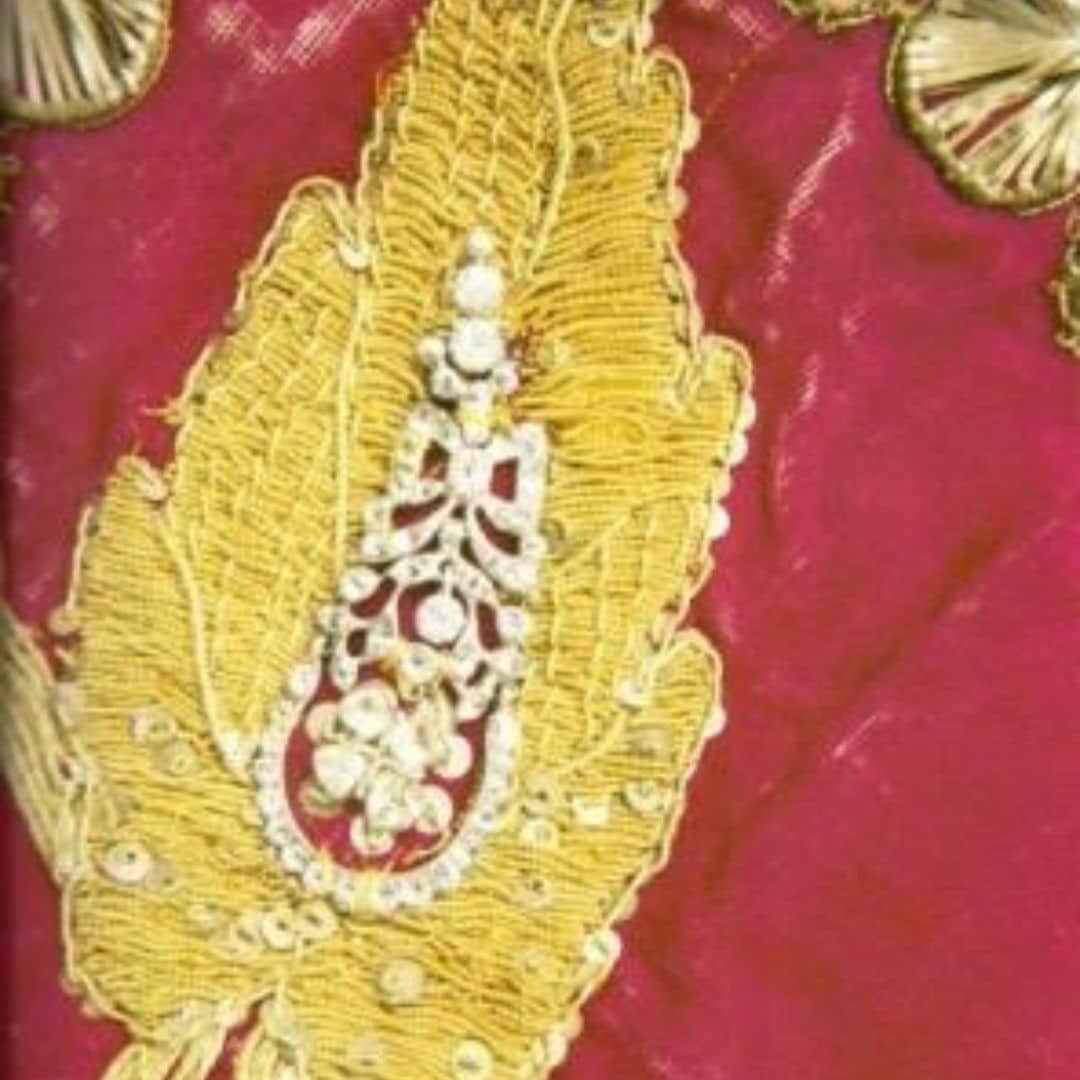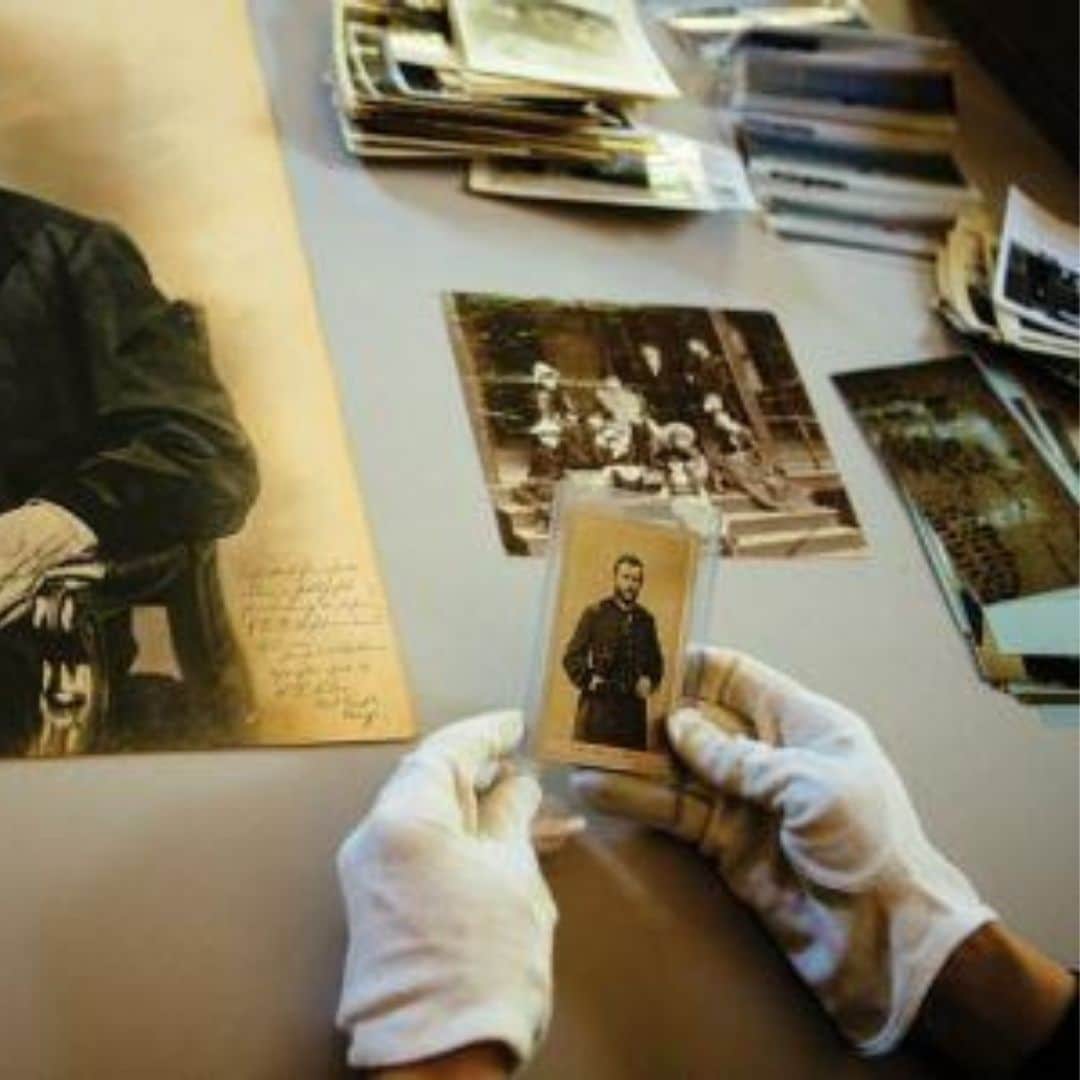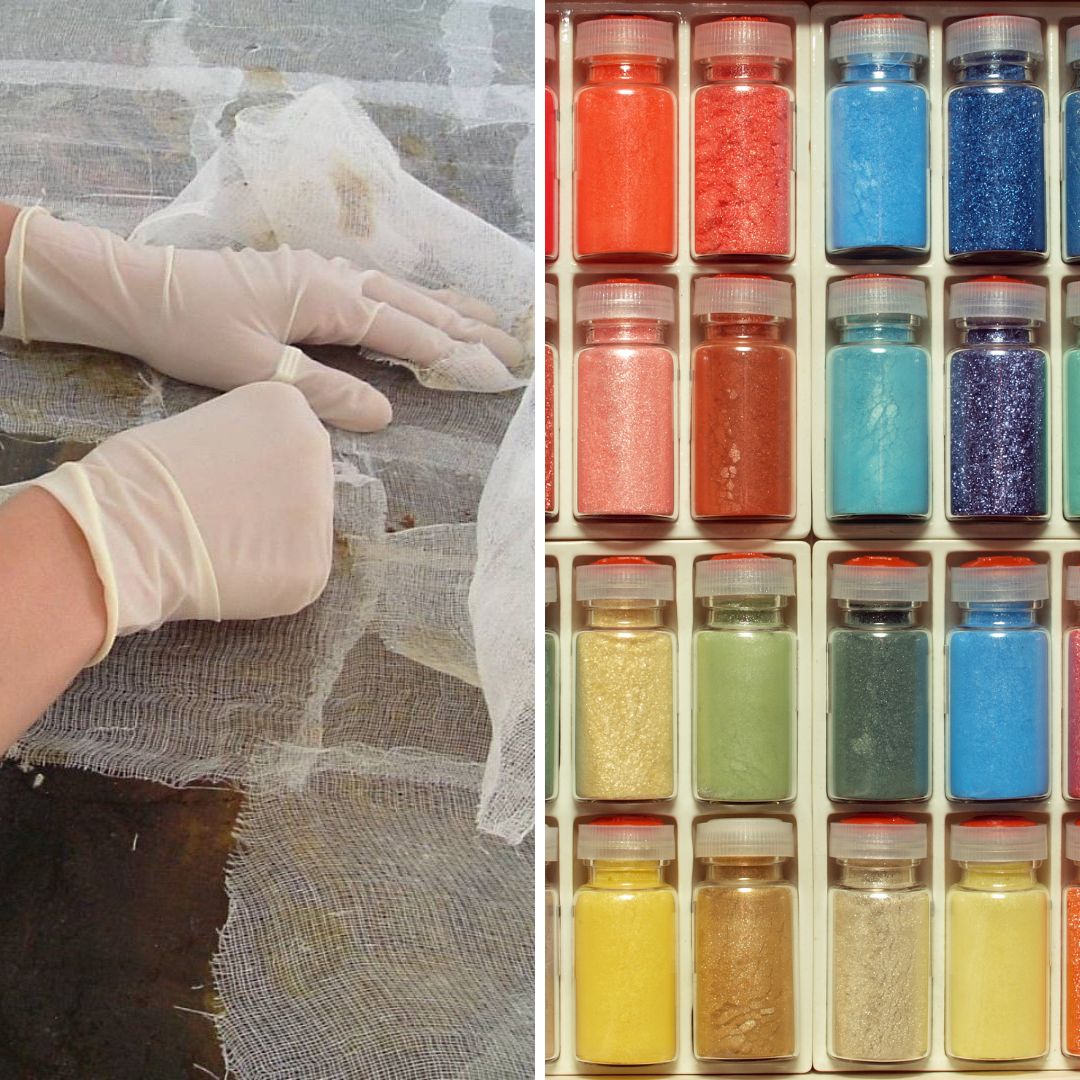Unfortunately, we are often confronted with news about art restorations that have radically altered the original works of art, sometimes making them unrecognizable.
What’s more, these art restorations are sometimes irreversible, making it impossible to recover the original materials or the legibility of the artwork.
Beyond the indignation, this article aims to reflect on the Why by looking at 3 art restorations that went wrong and in some of which the basic principles of conservation and restoration intervention were not followed.
Assuming that these actions are not deliberately destructive. Why do they keep happening?
The 5 basic principles of conservation and restoration
It is important to briefly recall the 5 basic principles of conservation and restoration that have obviously not been followed in some of the art restorations we will analyze below.
1 – Compatibility with the original materials
No physical or aesthetic damage to them.
2 – Respect for the original
No falsifying, hiding or inventing parts or areas that don’t exist and that distort the initial reading of the work.
3 – Minimal intervention
Doing only the bare minimum, avoiding causing physical stress to the work and ensuring that the historical and constituent information of the piece is maintained.
4 – Reversibility of the intervention
In terms of materials and techniques, without damaging the original.
5 – Recognition of the intervention
Distinguishing it from the original without disturbing the reading and longevity of the work.
3 art restorations that went wrong
1 – Ecce Homo, Borja, Spain
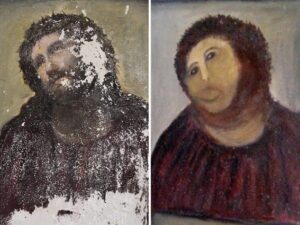
Let’s start with one of the most talked-about art restorations that went very wrong, distorting the original work of art and making it irreversible.
The Spanish painter and teacher Elías García Martinez produced the work Ecce Homo around 1930, in which he depicts Jesus wearing a crown of thorns. The work is a fresco mural that can be found in the Sanctuary of Mercy in Borja, Spain. Nobody paid much attention to the work until 2012, when the parishioner Cecilia Gimenez, then 82, decided to restore it.
The result was disastrous.
Why did it happen?
In this case, the 5 basic principles of conservation and restoration intervention were all forgotten, or rather, the person who carried out the work didn’t know them at all.
But not only the person who carried out the art restorations works, but those who have in their custody
works of heritage value also have an obligation to know these basic principles of conservation and restoration and monitor the intervention appropriately.
Art restorations do happen, fortunately less and less often, by people of good will with a flair for the arts who voluntarily intervene in works of heritage value without monetary compensation.
However, goodwill does not equal technical knowledge of conservation and restoration
What happened next?
After this episode, the town of few inhabitants and the restorer became famous. Many people decided to travel to see the damaged painting and it became a tourist phenomenon: a year later, the church already had around 40,000 visitors and more than 50,000 euros for a local charity.
2 – Jesse, Sistine Chapel, Vatican
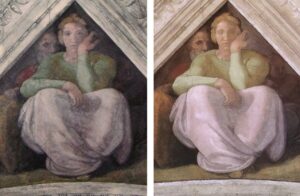
One of the most famous and controversial art restorations took place in the Vatican. Between 1980 and 1999, the frescoes in the Sistine Chapel, Michelangelo’s masterpiece, underwent restoration work in one of the most controversial and publicized interventions ever carried out.
Thanks to this work, Jesse went blind. This was because the restorers removed the dirt that had accumulated on the frescoes to reach their deepest layers and ended up altering the finishes and touch-ups that Michelangelo himself had made.
The work generated controversy, and according to experts it would be strange to suppose that the artist had painted his characters without eyes.
The same criticism applied to other parts of the Sistine Chapel in the Vatican, with experts arguing that the cleaning of Michelangelo’s frescoes, while revealing the fantastic colors of the original, would have eliminated many details and nuances made by the artist.

Why did it happen?
In contrast to the case presented initially, the art restorations in the Sistine Chapel were carried out by a highly specialized team of restorers supported by interdisciplinary scientific teams.
The diagnosis, preparation and execution of the work were carried out by teams of conservation and restoration technicians and the basic principles of intervention were followed.
The controversy centers on the methodological option defined for cleaning: “remove everything above the layer of buon fresco”, painted when the base layer is still damp.
Critics argue that this option led to the elimination of finishes by Michelangelo himself, which would have been dry-painted after the buon fresco had dried.
This and other art restorations lead us to reflect on the definition of intervention limits in conservation and restoration especially with regard to the cleaning phase, never forgetting that anything removed during cleaning cannot be recovered.
3 – The Virgin Mary and Child Jesus, Canada
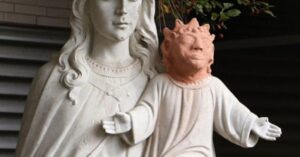
The third of the art restorations that went wrong is located in the Church of Sainte-Anne des Pins in Canada.
It all started when the figure was vandalized and the boy lost his head. Local artist Heather Wise kindly offered to repair the work and spent several hours sculpting clay into a stone statue.
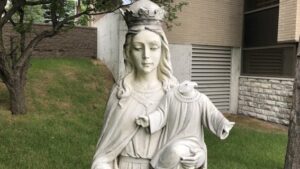
The result? Well, it must certainly have pleased fans of The Simpsons, as internet users immediately noted the new boy’s resemblance to Maggie Simpson… The faithful, on the other hand, were a little disappointed.
Fortunately, the repercussions of this bizarre art restoration were so great that the original head was found and returned.
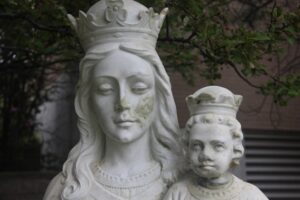
However, in June of this year the sculpture was vandalized again – again the head of baby Jesus was taken.
According to the church’s administration, this is just one of the frequent acts of vandalism that the institution faces, which include cut wires and broken light bulbs. The administrative council is studying the possibility of putting up a fence or removing the statue from the outside of the church in order to protect it, and only then will proceed with a new restoration.
Why did this happen?
Once again, this is one of the art restorations carried out by a local artist and in which the basic principles of conservation and restoration were not followed, namely respect for the original and compatibility of materials.
We should remember that, no matter how good an artist is, he or she is not a conservation and restoration technician and the initiative to create parts of a missing work of art is undesirable for many reasons, but above all because our artistic and aesthetic references are bound to be very different from those of the time when the work was produced.
This article is based on a text by Rute Ferreira, author of online courses with certificate by Citaliarestauro.com.


